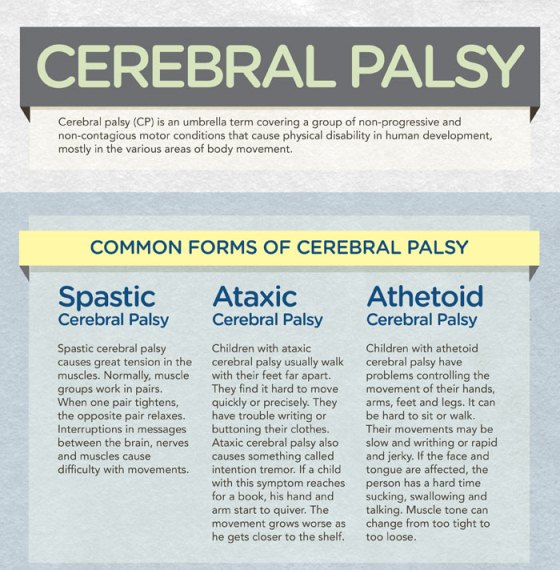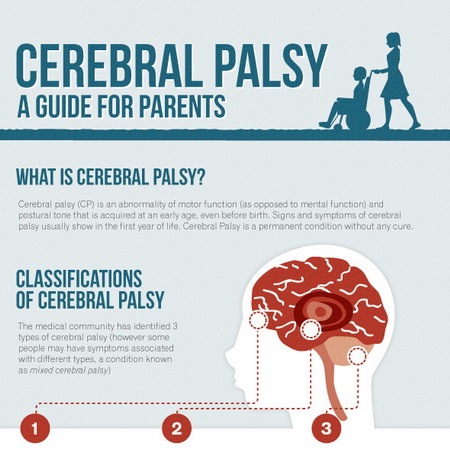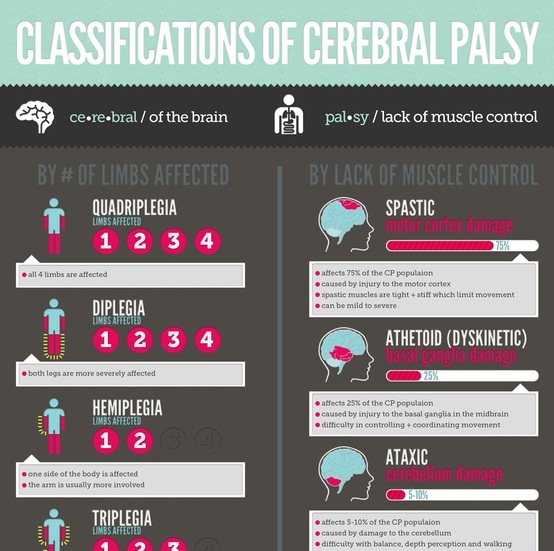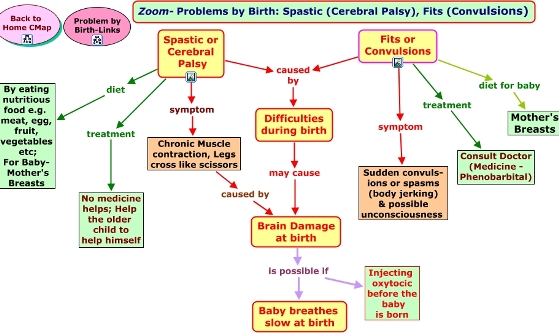Cerebral Palsy
Cerebral palsy (CP) is an umbrella term covering a group of non-progressive and non-contagious motor conditions that cause physical disability in human development, mostly in the areas of body movement. Cerebral palsy is a set of disorders involving brain and nervous system functions such as movement, hearing, seeing and thinking.
The word cerebral refers to the brain and palsy refers to paralysis or lack of control with one’s body. It is a disability resulting from injury to the brain before, during or shortly after birth. It can be caused by medical negligence or improper medical care by a nurse, doctor or other medical professionals.
 Source: sokolovelaw
Source: sokolovelaw
Cerebral Palsy A Guide for Parents
Cerebral palsy (CP) is an abnormality of motor function (as opposed to mental function) and postural tone that is acquired at an early age, even before birth. Signs and symptoms of cerebral palsy usually show in the first year of life. Cerebral Palsy is a permanent condition without any cure.
The medical community has identified 3 types of cerebral palsy (however some people may have symptoms associated with different types, a condition known as mixed cerebral palsy).
 Source: rosenfeldinjurylawyers
Source: rosenfeldinjurylawyers
Choosing the Right Toy for a Child with Cerebral Palsy
Many of these toys can be found at various major retailers throughout the U.S., both online and in stores. Here are the lists of toy suggestions that may be right for your child with cerebral palsy.
Source: sokolovelaw
Classifications of Cerebral Palsy
Motor cortex damage affects 75% of the CP population, caused by injury to the motor cortex. Spastic muscles are tight.
Source: Chris Hopkins
Problems by Birth: Spastic




